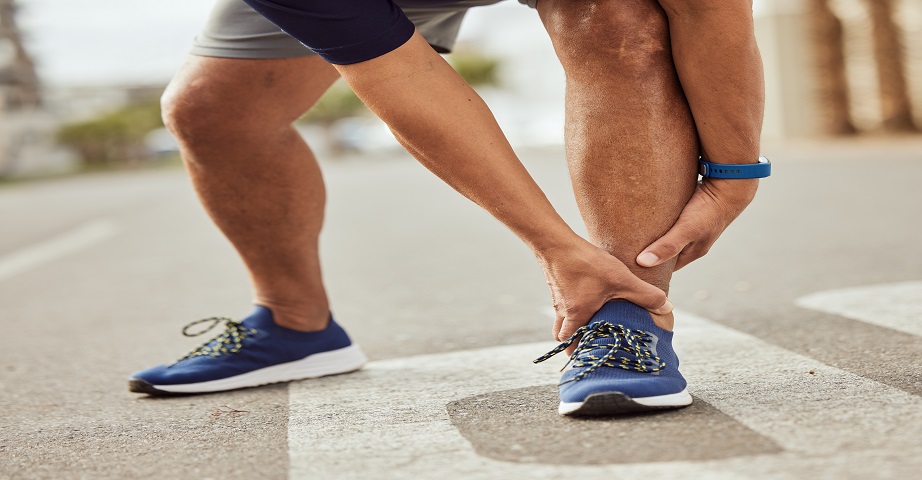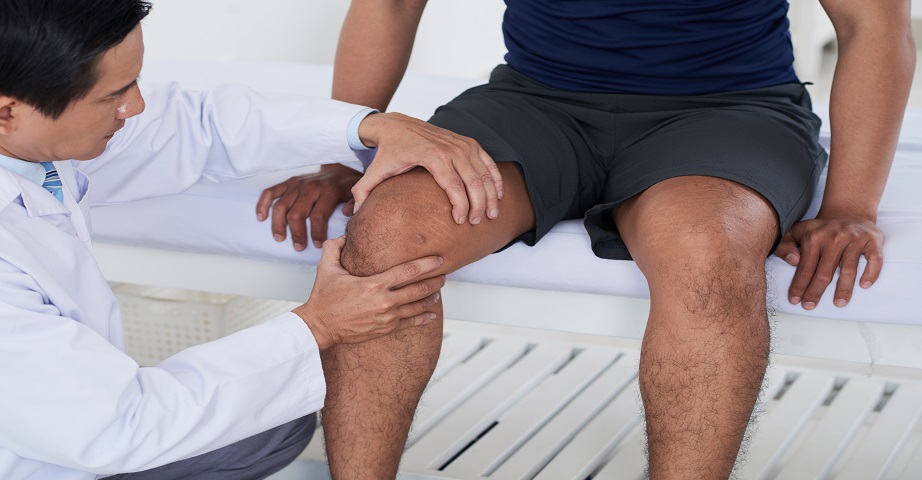Knuckle cracking - causes, diagnosis and prevention

Knuckle cracking is a phenomenon that, although most often affects the elderly, can occur in anyone, regardless of age or physical condition. The etiology of knuckle cracking can be different - the phenomenon can result from a sedentary lifestyle and lack of physical activity, but also can herald serious rheumatological and degenerative diseases, so the characteristic sound, appearing during movement, should not be underestimated. What do crackles in the joints mean and what are the causes of cricking How to prevent cracking of joints and is cricking in joints dangerous?
The structure of joints and their importance in the human body
The joints are part of the musculoskeletal system in the human body. They are mobile synovial joints, located between the bones, which allow them to move relative to each other. At the same time, the joints are responsible for maintaining proper body posture and making simple movements, and what is more, they are a support for the muscles.
Each joint consists of several important elements, such as:
- articular surface - in which can be distinguished a convex head and a concave acetabulum,
- joint capsule that stabilizes the entire joint,
- synovial cavity - the area between the bones,
- synovial membrane - the inner layer of the joint capsule, which is responsible for the production of synovial fluid.
The efficiency of individual parts of the joint guarantees the correct working of the entire structure. Individual joints differ in mobility and construction, but they are all necessary for the proper functioning of the musculoskeletal system and full mobility.
What does knuckle cracking mean?
Knuckle cracking is a condition that affects many people, not only seniors. Most often, knuckle cracking can be observed within a specific joint, performing movement after a longer immobilization, for example, getting out of bed in the morning, as well as during physical activity. Knuckle cracking can also occur during a sudden movement, such as squatting or bending.
Knuckle cracking is often referred to as crackling, crunching or throw out back. In some cases, it is a physiological phenomenon, but the characteristic sounds in the joints should not be underestimated. When they get worse and additional symptoms appear, such as pain or inflammation, you should consult a specialist, as this may indicate joint dysfunction or the development of the disease, such as rheumatoid arthritis.
What joints crick most often?
Most often, can be observed cricking in the knee joints. Often, as a result of a conflict of soft tissues with growing bone elements, may occur cricking in the hip joint. However, mechanical overloads may result in a disturbance of the biomechanics of the shoulder blade movement, which may intensify crackles within its structure, which are often referred to as the crackling shoulder blade syndrome.
Knuckle cracking - the reasons
Knuckle cracking can have many causes. They can be, for example, a physiological phenomenon, which is called cavitation. Cavitation occurs when, as a result of a change in the position of the articular surface, occurs a sharp change in the pressure of the fluid that fills the joint cavity. Then bubbles, or gas bubbles, may appear in the synovial fluid filling the joint cavity, and during their cracking, as a result of the return of intra-articular pressure to the original state, a characteristic sound can be heard, called cricking of the joints.
Knuckle cracking can also be the result of degeneration, as well as a low level of hydration of the body - too low water supply makes the body directs the supplied fluids where they are most needed, to the heart and brain. Then there may be a shortage of water in the joints, which may result in increased friction, and as a result may cause a cricking within their structure.
The etiology of cricking joints can also include genetic conditions, including looser construction of bone connections, which results in a characteristic sound when performing sudden movements, as well as a shortage of valuable macronutrients, vitamins and minerals, such as calcium, protein, omega-3 acids, B vitamins or vitamin C, which are necessary for the proper functioning of articular cartilage and the entire structure of the joints. Deficiency of these nutrients may contribute to the reduction of the regenerative capacity of the synovial fluid and cartilage, and cause dysfunctions within the joints.
Cricking joints can also be a consequence of too low physical activity - lack of movement can lead to a decrease in joint mobility, and thus may increase the frequency of occurrence of characteristic cracks in their structure. Among the causes of knuckle cracking, it is also worth mentioning excessive body weight. Overweight and obesity cause overload of the musculoskeletal system, and thus may contribute to the occurrence of other pain, characteristic crackles and increase the risk of developing diseases of the joint system.
Knuckle cracking may also result from softening of articular cartilage, or chondromalation, which results in changes in the structure construction. The articular cartilage then becomes thinner, and small cracks may appear on its surface, which intensify the knuckle cracking. When cricking joints is also accompanied by pain and redness and there is a limitation of joint mobility, you should consult a doctor, as this may indicate the development of diseases within the structure, such as rheumatoid arthritis, an autoimmune disease that requires proper treatment and therapy. Cracking in the joints and pain accompanying the characteristic sound may also be associated with damage to the meniscus or ligaments, as well as tendon saltus or dysfunction of the patellofemoral joint or overgrowth of the folds of the synovial membrane.

Knuckle cracking of children
Knuckle cracking can also often be observed among children. What is the reason for the crackling of joints in young organisms? Most often it is the result of hormonal changes associated with the process of intensive growth of the child. Then there may be too much relaxation of the ligaments, which may result in a painless crick, which does not limit the mobility and activity of the child, and usually resolves spontaneously.
Moreover, knuckle cracking of children and infants, as among adults, can also be caused by the phenomenon of cavitation.
Is cricking in the joints harmful or dangerous?
Knuckle cracking can be a physiological effect, which is not a cause for concern. However, if the crackling intensifies or is accompanied by other symptoms, it is worth consulting a doctor to verify the cause of the ailment and take any necessary treatment.
If, in addition to the characteristic noises, there is swelling, redness, pain or limitation of mobility, you should immediately go to a specialist - cricking bones may indicate the development of a rheumatic disease. Morning stiffness, which is associated with the limitation of joint mobility after waking up and prevents smooth movements, should also not be underestimated. Indication for medical consultation should also be pain in the knee, ankle or ankle joint when walking, as well as all kinds of deformities and exostosises.
Knuckle cracking - diagnostics
Unambiguous self-verification of what is the reason for cricking in the joints can be difficult, and often even impossible. Then the best solution seems to be a consultation with a specialist - an orthopedist or rheumatologist.
The doctor should conduct a detailed interview and, if necessary, order diagnostic tests, such as an X-ray, which will allow to show possible degenerative changes.
Laboratory tests may also be helpful in diagnostics, which will enable, among others, to determine whether knuckles cracking are not the result of macro-and micronutrient deficiencies. Arthroscopic examinations may be a good solution in the case of knee joint ailments, which will allow examining the degree of degradation of articular cartilage or joint capsule. Sometimes a doctor may also order a computed tomography or magnetic resonance imaging.

Ways to knuckle cracking or how to take care of cricking joints?
In order to properly care for the joints, you must first verify the source of the crick. Proper diagnosis allows you to choose the right therapy and treatment, which can reduce the cricking in the joints or inhibit the development of the diagnosed disease.
If knuckle cracking is not associated with any disease and does not cause pain, and still occurs with high frequency, it is worth considering lifestyle modification and the use of appropriate dietary supplements. What actions can be helpful during knuckle cracking?
Modification of the menu - diet when joints crick
In order to protect joints and reduce the frequency of characteristic sound within them, it is worth paying special attention to the supply along with the daily menu of ingredients that can positively affect the functioning of the musculoskeletal system. Therefore, it is worth including in the diet foods rich in ingredients, such as:
- omega-3 acids,
- protein,
- calcium,
- vitamins of group B,
- vitamin C,
- vitamin D.
So it is good to include in the menu, among others, fatty sea fish, vegetables and fruits, whole grains products, legumes or milk and dairy products. A good solution may then be the use of an anti-inflammatory diet. Among people struggling with excessive body weight, the appropriate direction of action may be the use of a diet with energy deficit, the purpose of which will be to reduce body weight and relieve the musculoskeletal system.
Physical activity, or exercises for cricking joints
Regular sports can improve joint mobility and thus allow the joint system to be kept in good condition. However, the exercises should not burden the body too much, because excessive physical effort can also intensify the occurrence of undesirable ailments. Moderate physical activity can have a positive effect on knuckle cracking, and stretching, gymnastics or yoga can strengthen the musculoskeletal system and positively affect the efficiency of the body.
What to do when knuckle cracking occurs after a start to exercise? The reason for cricking may then be the lack of proper warm-up, which is why before starting physical activity, it is worth warming the body properly and preparing it for exercise.
Appropriate supplementation, or dietary supplements for knucle cracking
Support during knuckle crackling may also be appropriate dietary supplements, rich in ingredients that improve joint regeneration and their functioning. Therefore, it is worth considering the use of preparations containing compounds such as:
- collagen,
- hyaluronic acid,
- chondroitin,
- glucosamine,
- organic sulphur,
- omega-3 acids,
- vitamin D.

